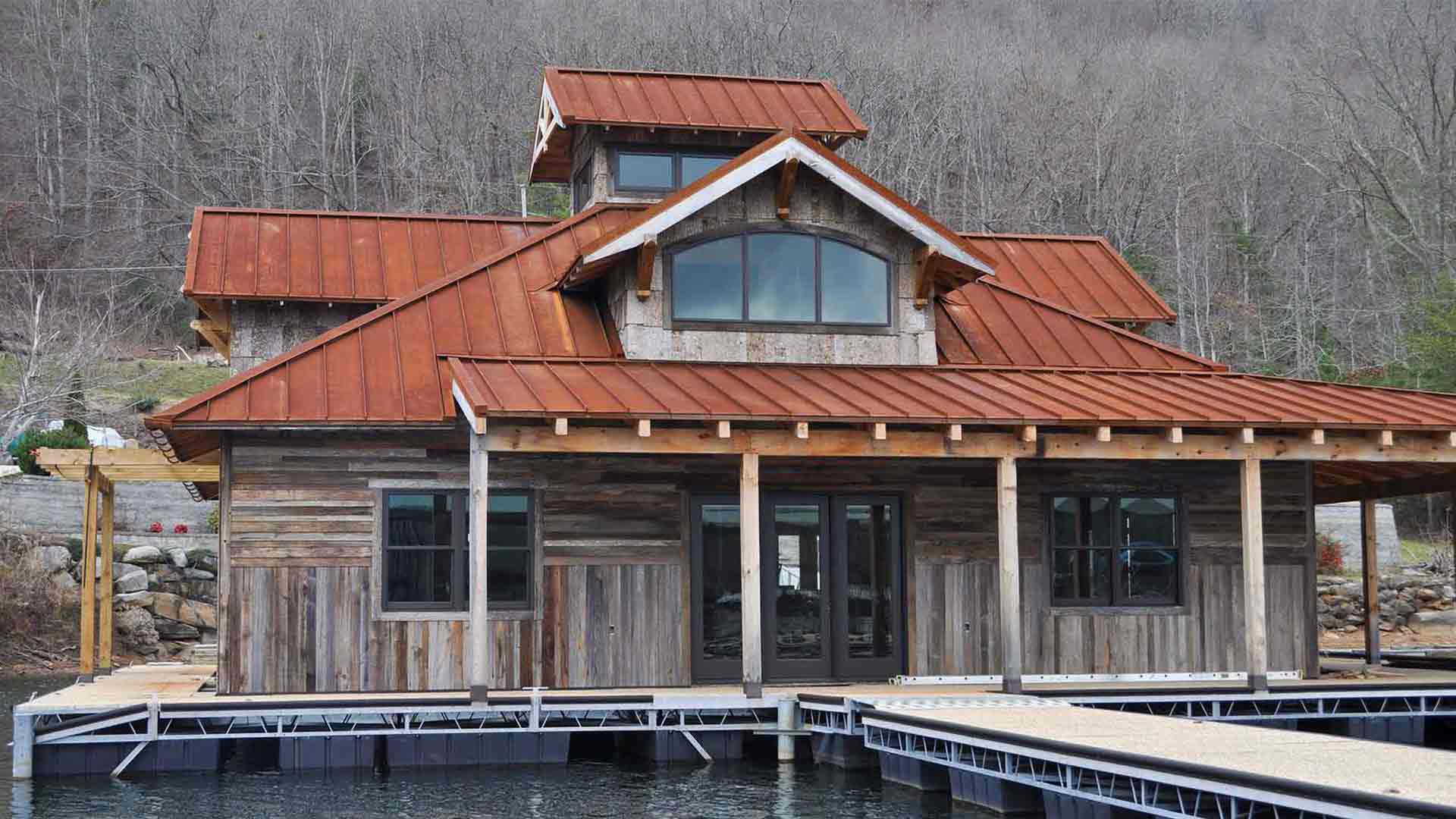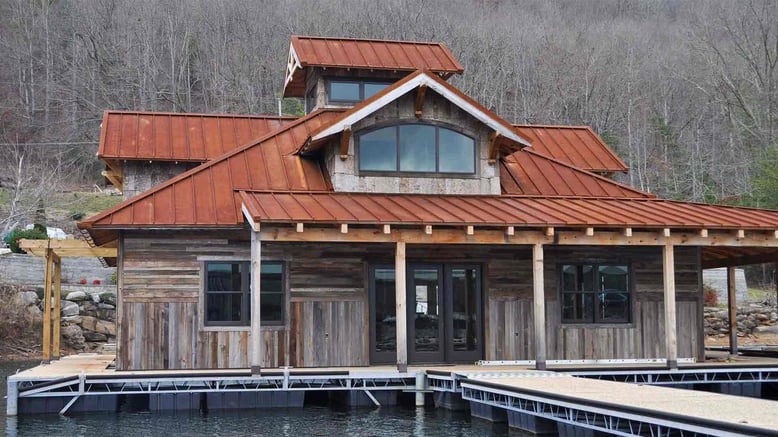Corten Roofing: Which Climates To Avoid
Corten steel, also known as weathering steel, is a unique finish that’s highly sought after for its distinct appearance and naturally oxidizing coating. Even though the material is low maintenance once the protective coating is formed, getting to that point might not be as easy.
Corten steel requires a certain environment for its natural oxidation process, also known as patina, to occur. The steel will look rusted very quickly, but the process generally takes 2-3 years to stabilize. However, being in an environment with the wrong elements will prevent the rust layer from ever becoming stable.
In order to prevent this from happening, you need to make sure your property is in a location where the climate is a match for the Corten material.
Appearance Of Corten Steel
Since the patina formation on Corten is a natural process, the results are somewhat unpredictable. The color finish will not be exactly the same from one project to the next. Sometimes the finish may not even be totally consistent within a project. As a general rule, weathering steel in wetter climates will have a more reddish hue compared to the same steel in drier climates. Regardless of which climate the steel oxidizes in, the final outcome will have a darker, earthy tone.
The Right Weather Elements For Corten
A corten roof needs to be in an environment with alternating wet and dry cycles to properly form the adhered protective layer that it’s known for. During these rotating cycles, the rust layer becomes a little thicker, while the underlying solid steel becomes thinner as the metal goes between being damp and drying out.
The rust layer takes a couple of years to stabilize, resulting in the highly desired, maintenance-free material. However, if the rust layer is in the wrong climate that prevents it from stabilizing, the metal will become punctured and ultimately have to be replaced.
The Climates To Avoid With A Corten Roof

Coastal Environments
Properties near the ocean, especially those within one mile from the ocean, are surrounded by a high amount of salt particles in the atmosphere. When salt spray is continuously deposited onto a Corten surface, it prevents the development of the inner protective oxide layer from forming.
The rust will not stabilize but may continue to corrode, inevitably resulting in holes in the material. Properties that are waterfront, or close to water, should not use a Corten roof to avoid future roofing issues.
Instead, consider using one of the materials listed below that are all resistant to corrosion from salt water:
- Aluminum
- Copper
- Zinc
- Slate
- Clay Tiles
Tropical Locations
Any area that is very humid with heavy rainfall, such as a tropical environment, will not be good for Corten. The consistent moisture will prevent the rust from reaching its stable point. Corten needs to be able to dry out completely after it gets wet. Otherwise, the protective oxides will not be able to crystallize, and the areas that are not able to dry out will experience higher corrosion rates.
For a tropical location, consider using one of the following materials listed below that perform well during extreme heat and exposure to moisture:
- Metal
- Slate Tiles
- Concrete Tiles
- Hot-Weather Shingles
Roof In A606-4 Corten Standing Seam Panels
Other Considerations
If you do live in a climate that supports the use of Corten, there are still other things you have to consider when using this kind of material.
The Rate Of Patina Formation
The rate at which the steel stabilizes and forms its desired patina depends on the climate. While it’s generally quick in large urban centers, the weathering rate is much slower in more rural environments. Also, if the Corten panels are going to be used in interior designs, the wet/dry cycles are absent and it will not age correctly. You will have to pre-rust the steel and then it can be installed inside once the patina has formed.
If pre-rusting the steel seems like too much work we recommend painted products that look rusted.
Appearance
Since the patina formation on corten is a natural process, the results are somewhat unpredictable. The color finish will not be exactly the same from one project to the next. Sometimes the finish may not even be totally consistent within a project. As a general rule, weathering steel in wetter climates will have a more reddish hue compared to the same steel in drier climates. Regardless of which climate the steel oxidizes in, the final outcome will have a darker, earthy tone.
Roof Pitch
Corten should only be placed on roofs with the correct pitch. While the roof does not necessarily need a high pitch for corten, there should at least be enough slope to cause any rain or snow to runoff. The recommended minimum pitch for a corten roof is 3:12. A roof with at least this pitch will prevent rainwater from accumulating in pockets on a corten roof that would cause a higher corrosion rate.
To learn about calculating the pitch of a roof, we suggest reading:
Runoff And Staining
Rust runoff can result in staining. Sidewalks, driveways, and other surface areas can be stained or streaked if they come into contact with rust runoff.
If you are in the design phase of a new construction, take runoff into account by planning on installing Corten in an area where runoff will not be a problem. You can also use gutters and downspouts to redirect runoff to an area where it will not be an issue.
Corten Roofing Alternatives
It's important to avoid areas with exposure to salt and extreme moisture with Corten roofing. As long as these elements are avoided, the top layer of the material will coat itself to become resistant to corrosion and will result in a beautiful, unique rust color.
If you've been looking into rusted roofing like corten, you may have also come across bare cold rolled steel as a roofing option. While bare cold rolled steel is more affordable, it's not always the right choice.
Continue on to learn about the differences between these two rusted roofing options:
Corten v. Bare Steel: Which Is Better For My Rusted Roof?






